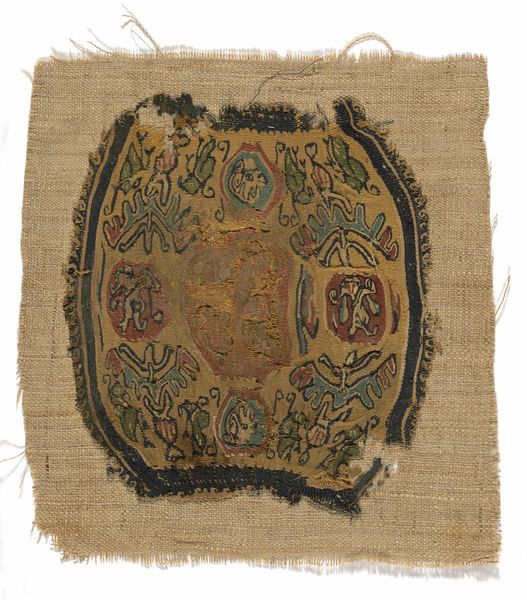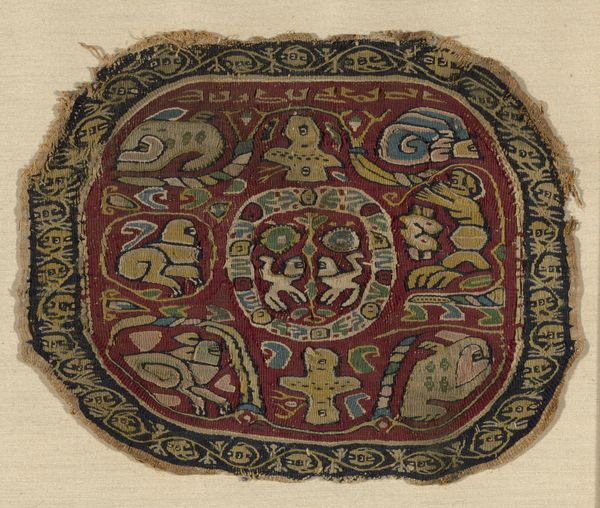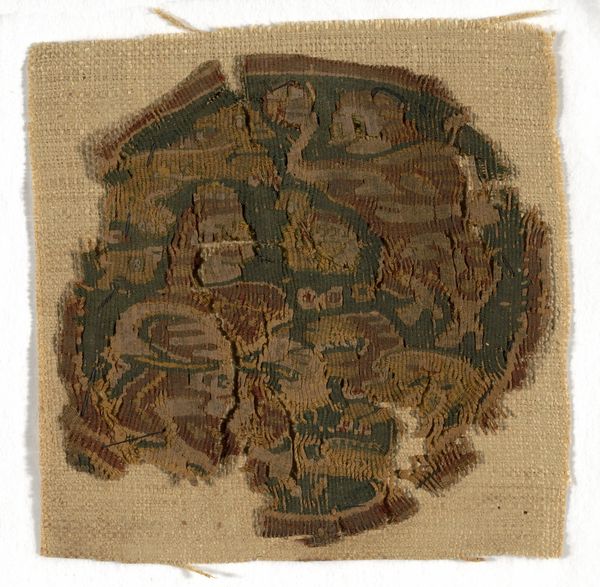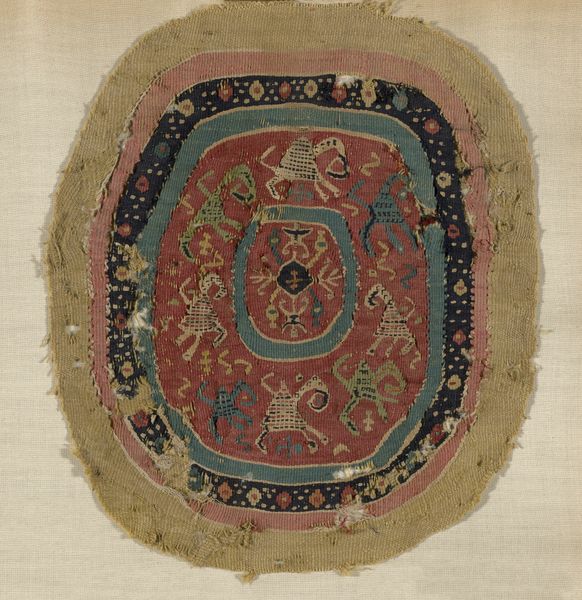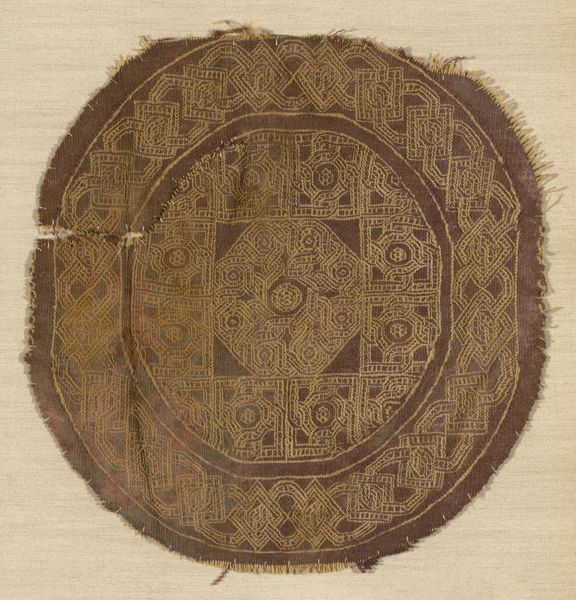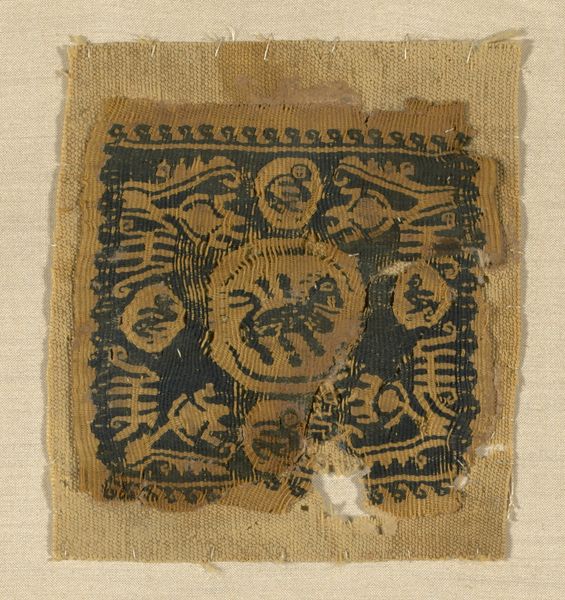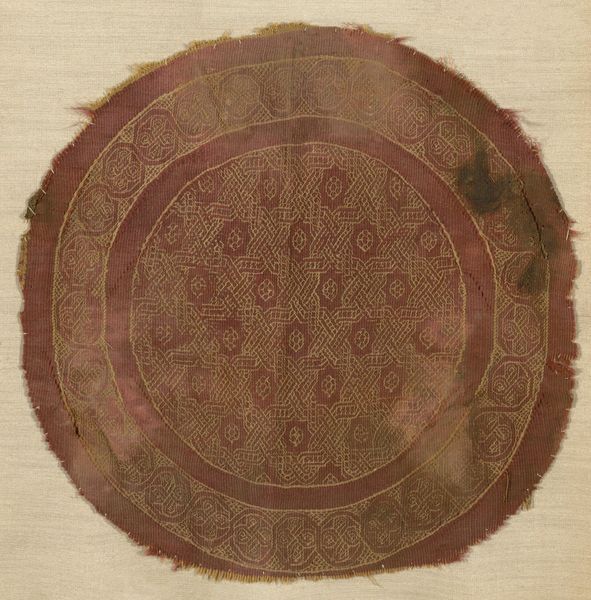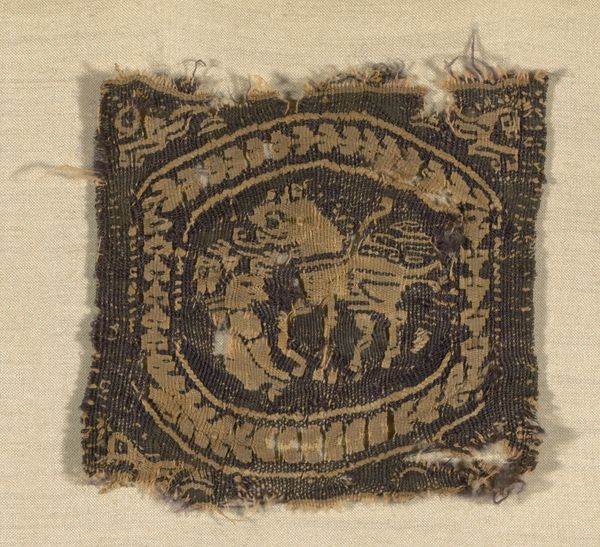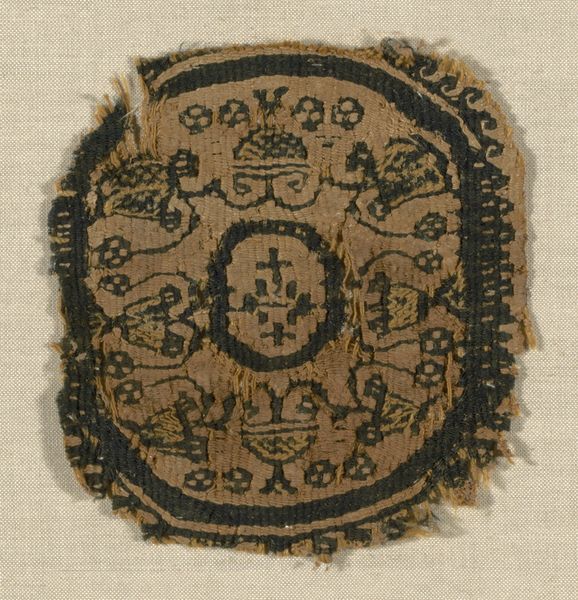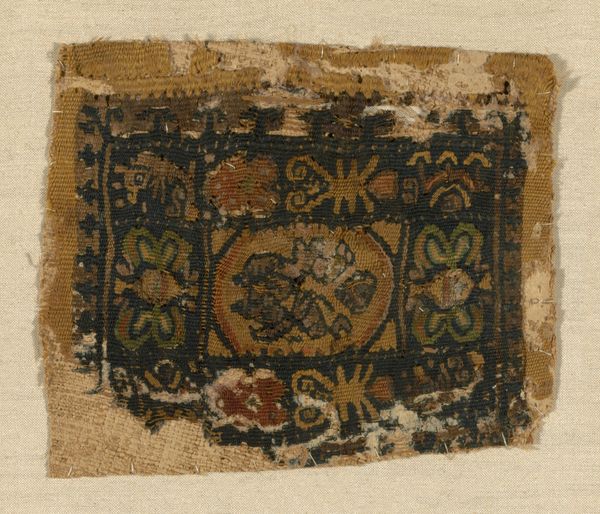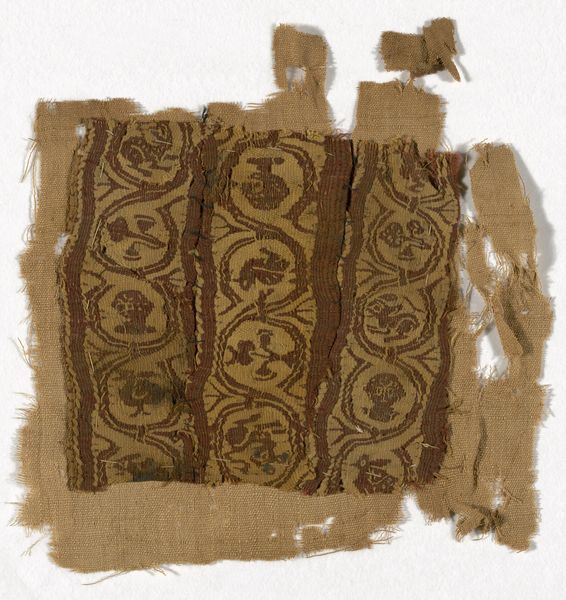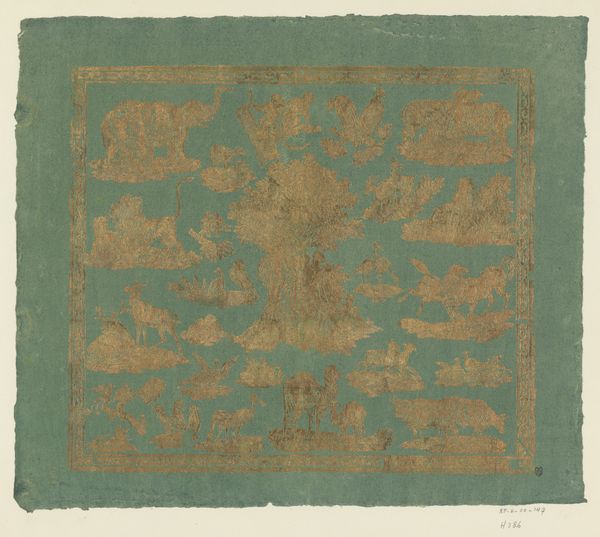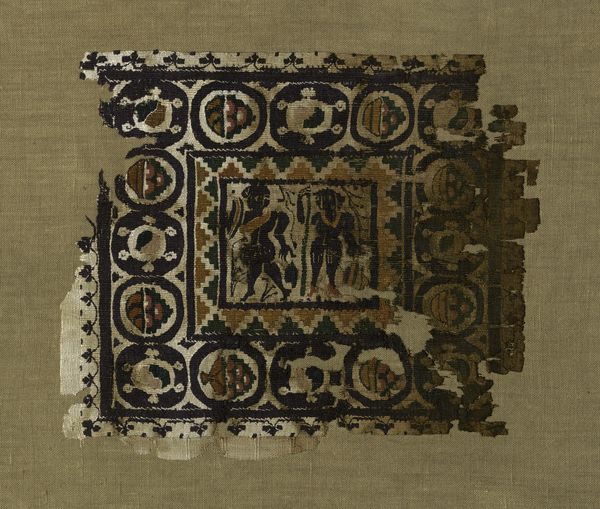
Roundel Roman period (30 B.C.– 641 A.D.)/Arab period (641–969), 6th/8th century
0:00
0:00
mixed-media, weaving, textile
#
mixed-media
#
weaving
#
textile
#
ancient-egyptian-art
#
figuration
#
egypt
#
ancient-mediterranean
#
mixed medium
#
mixed media
Dimensions: 15 × 18.5 cm (5 7/8 × 7 1/4 in.)
Copyright: Public Domain
Editor: Here we have a textile piece, a roundel to be exact, dating from the 6th to 8th century during the Roman and Arab periods. The mixed-media weaving depicts figures in a circle. I'm immediately drawn to its fragmented condition and how it almost abstracts the figures within. What compositional elements stand out to you? Curator: The dominating circular form, first and foremost. The artist has very consciously organized figural elements within a well-defined ring. Observe the density of the woven threads – the tight weave that holds the imagery against the ground weave of the textile. How does the condition, the loss of material, contribute to your reading? Editor: The missing areas emphasize the fragility of the medium and the passage of time, but also somewhat democratize the figures, reducing them to mere abstract components. Does this reading resonate? Curator: Indeed, the abstraction becomes heightened. Consider the internal composition. The figures are positioned at even intervals, creating a sense of rhythm. Note how the internal circles play against the implied lines and orientation of each of the figures, drawing our eye into and across the roundel. It resists easy reading. Editor: I see that now. The internal circular patterns create further dynamic tension. It's a fascinating tension between clarity and ambiguity, tradition and change, preservation and loss. I really appreciate how analyzing the visual elements illuminates so much of this piece. Curator: Yes, paying close attention to these qualities allows the work to express meaning formally through medium and figure.
Comments
No comments
Be the first to comment and join the conversation on the ultimate creative platform.
